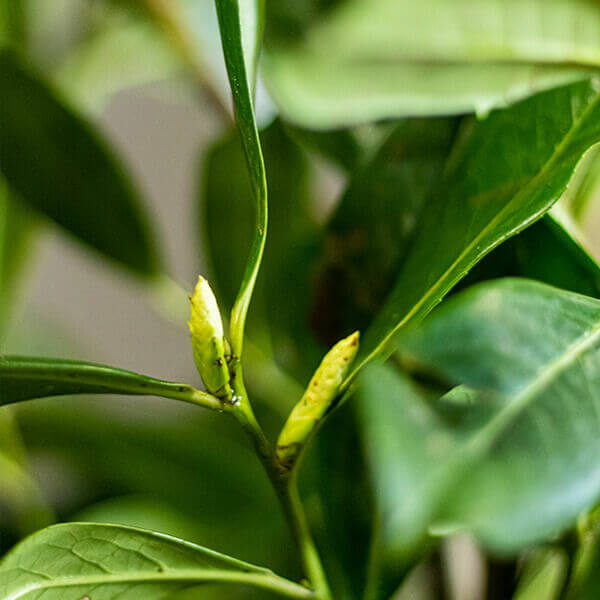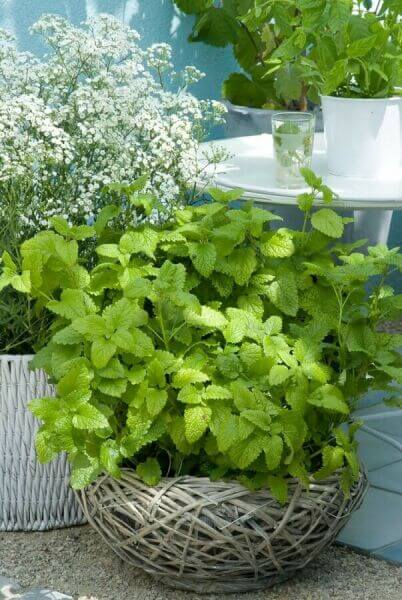Best Hedging Plants For Terrace Gardens
Boost your garden's allure with lavish hedge varieties such as Yew (Taxus), Thuja, Laurel, Photinia, and Bamboo, celebrated for their structural stability and ecological advantages.
Yew and Thuja supply evergreen coverage and winter season resilience, while Laurel provides quick development and broad, aromatic leaves.
Photinia adds seasonal beauty with its dynamic red foliage, and Bamboo provides a low-maintenance, serene ambiance.
These hedges enhance air quality, reduce noise, and produce tranquil, personal spaces.
Appropriate planting, spacing, and upkeep ensure vigorous growth and eco-friendly harmony.
Explore how these rich varieties can elevate your garden's appeal and wellness.
Key Takeaways
Change Your Garden With Lush Hedge Ranges
- Select Yew for its thick, evergreen development and unrivaled longevity.
- Select Laurel for its fast growth and broad leaves, making sure fast privacy.
- Choose Photinia for its vibrant seasonal foliage, which turns a striking dark red.
- Make use of Bamboo for a low-maintenance, winter-hardy hedge with visual appeal.
- Area plants 2-3 per meter and prune regularly for optimal growth and health.
Popular Hedge Plants
When transforming a garden with rich hedge varieties, it's necessary to consider popular hedge plants such as Yew, Thuja, Laurel, and Photinia due to their unique characteristics and benefits.
Yew (Taxus) is highly esteemed for its longevity and dense, green growth, making it a prime option for withstanding landscapes.
Thuja is kept in mind for its evergreen foliage and robust winter season strength.
Photinia includes seasonal vibrancy with red leaves that darken with time, developing vibrant visual appeal.
Laurel provides fast growth and aromatic, broad leaves, perfect for fast personal privacy.
Furthermore, Bamboo is an outstanding choice for ambiance, using a low-maintenance, winter-hardy alternative that boosts the garden's visual with its stylish, swaying canes.
These choices deal with a variety of horticultural needs and choices.
Advantages of Garden Hedges
Garden hedges offer a multitude of advantages, making them a valuable addition to any landscape. These natural barriers are cost-effective to carry out and offer significant wind defense, enhancing air blood circulation and adding to noise decrease. The dense foliage of hedges like Thuja and Beech makes sure privacy by blocking visibility, producing a tranquil and secluded environment.
Hedges likewise play an essential function in microclimate regulation, supplying a stable environment that cultivates plant growth and lessens temperature changes. Their detailed leaf structures filter contaminants, enhancing air quality and contributing to a healthier garden environment.
Moreover, hedges master sound decrease, taking in and deflecting sound waves to lower ambient noise levels. This dual performance of providing both acoustic and visual personal privacy enhances the overall serenity and visual appeal of any garden.
Planting and Upkeep Tips
For an effective hedge, careful preparation of the planting area is essential. Guarantee the soil has correct pH and drain to support strong root advancement.
Area the plants properly for the selected species. Water the hedge often throughout its preliminary development stage, changing as required with seasonal modifications.
Execute a organized bug control and illness avoidance method, utilizing chemical or natural treatments when needed. Routinely examine for aphids, mites, and fungal infections.
Apply mulch to keep moisture and suppress weeds. Seasonal pruning promotes dense growth and air circulation, essential for plant health.
Following these guidelines will assist you cultivate a vibrant, well-kept hedge that improves the beauty of your garden.
Spacing and Cutting Standards
Spacing and Trimming Guidelines
Proper spacing and cutting are crucial for cultivating healthy, visually appealing hedges. Sufficient spacing ensures each plant gets adequate nutrients, light, and airflow.
Follow these standards for ideal hedge maintenance:
- Spacing: Position hedge plants 2-3 plants per meter to motivate robust development.
- Pruning Methods: Regular pruning is essential for maintaining desired hedge height and shape. Trim brand-new growth in summertime and cut back older wood during winter season.
- Seasonal Care: Adjust trimming schedules and techniques according to seasonal requirements to make sure plant health.
- Hedge Height: Routinely display and trim to keep the desired hedge height and achieve consistent aesthetic appeals.
Abiding by these steps will guarantee your hedge thrives, improving both the appeal and performance of your garden.
Selecting the Right Hedge
Picking the Right Hedge
Selecting the suitable hedge includes assessing aspects such as fully grown height, foliage density, and environmental durability. Effective hedge plant choice requires comprehending each types' growth qualities and site-specific flexibility.
For instance, Yew (Taxus) uses excellent longevity and thick development, while Thuja is notable for its winter durability. In addition, thinking about upkeep requirements is crucial; fast-growing species like Laurel or Privet demand regular trimming, whereas low-maintenance choices like Bamboo or Ivy might be more effective for those looking for very little maintenance.
Ecological aspects such as soil type, light schedule, and wetness conditions need to also direct the selection process. This cautious method makes sure the picked hedges will thrive, providing both visual and functional benefits to the garden landscape.
Delivery and Planting Guidance
To ensure your hedge plants thrive, they should be provided by specialized carriers and planted without delay upon arrival.
Follow these necessary actions for successful planting:
- Soil Preparation: Enrich the soil with organic matter to enhance drain and nutrient material.
- Planting Depth: Produce a trench twice the width and equivalent to the depth of the root ball.
- Watering Strategies: Water thoroughly after planting, keeping the soil consistently wet but not saturated.
- Mulching: Use a layer of mulch to keep moisture and reduce weeds.
Client Support and Service
Given the essential function of timely help in horticultural pursuits, our client assistance team is readily available six days a week through telephone, e-mail, and social networks to offer skilled suggestions and swiftly resolve any issues. Their devotion to fast response times guarantees customer complete satisfaction by dealing with questions associated with plant health, optimal planting techniques, and upkeep schedules.

Reaction Time
Email
This extensive support system, enhanced by an outstanding 9.3/ 10 customer ranking, highlights our commitment to enhancing the gardening experience for every single client.
Regularly Asked Concerns
How Long Does It Consider Hedge Plants to Establish?
Hedge plants normally require one to 3 years to become totally established, with the specific duration differing by types and growing conditions.
Efficient care throughout this crucial duration is important for robust development. Consistent watering, watchful weed control, and proper fertilizer application are pivotal in promoting strong root advancement.
For example, fast-growing types like Laurel may establish more rapidly, while slower-growing varieties such as Yew might take longer. Thorough maintenance accelerates the facility procedure, resulting in dense and healthy hedges.
What Are the Finest Hedge Plants for Privacy?
The question of the best hedge plants for privacy includes examining evergreen and deciduous options.
Evergreen hedges like Thuja, Laurel, and Cypress offer year-round protection, making sure constant personal privacy.
In here contrast, deciduous hedges such as Beech offer seasonal privacy, shedding leaves in chillier months.
Secret upkeep pointers for personal privacy hedges include regular cutting, fertilizing in spring, and appropriate spacing-- normally 2 to 3 plants per meter.
In addition, constant watering and thorough weed elimination are vital for promoting healthy, thick development.
Can Hedge Plants Bring In Wildlife to My Garden?
Yes, hedge plants can bring in wildlife to your garden by supplying necessary advantages like shelter, food, and nesting websites, thus improving regional biodiversity. For circumstances, yew, holly, and laurel are outstanding for drawing in birds, while ivy supports a variety of insects.
Nevertheless, it is essential to note that there are some drawbacks, such as increased upkeep to handle pests and regular maintenance. Carefully selecting and keeping hedge ranges can help stabilize these advantages and disadvantages, ultimately fostering a lively and sustainable ecosystem in your garden.
Exist Any Flowering Hedge Plants Available?
Yes, there are flowering hedge plants readily available that can improve the beauty of your garden.
For instance, Elaeagnus, also understood as Olive Willow, produces fragrant white flowers in the fall, adding a touch of elegance.
Photinia, another popular option, showcases vibrant red leaves that grow into a rich green, developing a dynamic visual result throughout the seasons.
To guarantee these plants grow, it's vital to practice proper pruning methods and seasonal upkeep, such as trimming brand-new growth in the summer season and cutting back in the winter season.
These measures will assist keep the health and aesthetic appeal of your blooming hedges.
How Do I Avoid Pests in My Hedge Plants?
To prevent bugs in hedge plants, employ natural insect control approaches and maintain proper hedge care. Present helpful insects like ladybugs, which victimize hazardous bugs, to create a balanced community.
Regularly inspect your hedges for indications of problem and promptly eliminate any affected parts to prevent the spread. Guarantee the health of your hedges by using well balanced fertilizers and providing adequate water.
Utilize mulching to keep soil moisture and correct spacing to reduce plant stress and promote robust development. These practices jointly assist in decreasing bug concerns and keeping a healthy hedge.
Conclusion
In essence, picking the ideal hedge ranges such as Yew, Thuja, and Laurel can change any garden into a relaxing haven. These plants offer year-round greenery, enhance visual appeal, and deal useful benefits like noise reduction and wind defense.
Correct planting methods, accurate spacing, consistent watering, and seasonal cutting are crucial for ideal growth.
Dependable delivery services and expert client support make sure a smooth experience from purchase to planting, making it easier than ever to raise your outdoor space.
Garden hedges use a wide variety of benefits, making them an important addition to any landscape. These natural barriers are economical to implement and supply considerable wind protection, boosting air circulation and contributing to sound reduction. The thick foliage of hedges like Thuja and Beech guarantees personal privacy by obstructing presence, producing a serene and secluded environment.

Pruning Techniques: Regular pruning is essential for keeping wanted hedge height and shape. Cut new growth in summer season and cut back older wood throughout winter.